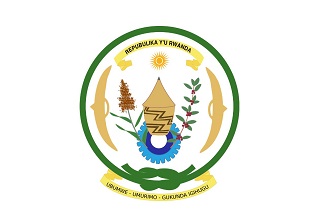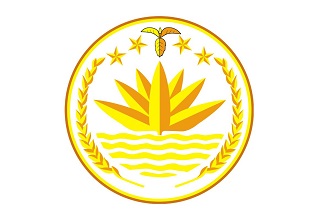Regarding the Inspection and Quarantine Requirements for Beef from Vanuatu to China
I. Inspection and quarantine basis
(I) Laws and regulations.
The Food Safety Law of the People's Republic of China and its implementing regulations, the Law of the People's Republic of China on Entry and Exit Animal and Plant Quarantine and its implementing regulations, the Law of the People's Republic of China on Import and Export Commodity Inspection and its implementing regulations, the Special Provisions of the State Council on Strengthening the Supervision and Management of Food and Other Product Safety, and the Measures for the Administration of Import and Export Food Safety of the People's Republic of China and the Regulations on the Registration and Administration of Overseas Production Enterprises of Imported Food of the People's Republic of China.
(II) Bilateral Protocol.
The Protocol on Inspection, Quarantine and Sanitation Requirements for Beef Imported from Vanuatu by the General Administration of Customs of the People's Republic of China and the Biosafety Bureau of the Republic of Vanuatu (hereinafter referred to as the "Protocol").
II. Products allowed to be imported
Beef allowed to be imported refers to frozen deboned beef under 12 months of age [skeletal muscle (including fat attached to muscle) after the hair, viscera, head, tail and limbs (below the wrist and joints) are removed after slaughtering and bleeding].
Visceral fat, offal (shredded fat, minced meat, minced bones), minced meat, ground meat, mechanically separated meat and by-products are not allowed to be imported into China. The intestine (from the duodenum to the rectum, including the terminal ileum), thymus, spleen, tonsils, skull including brain, eyes, trigeminal ganglia, spinal cord, spine including dorsal root ganglia and other tissues must be removed.
III. Requirements for production enterprises
Beef export enterprises (including slaughtering, cutting, processing and storage enterprises) should comply with the requirements of relevant veterinary health and public health laws and regulations of China and Vanuatu under the supervision of the Biosafety Authority of the Republic of Vanuatu.
Beef export enterprises to China shall be registered with the Chinese Customs. Products produced by enterprises approved for registration can be exported to China from the date of registration. Unregistered meat enterprises are not allowed to export beef to China.
IV. Inspection and quarantine requirements
(I) Animal disease management.
1. There is no foot-and-mouth disease, blue tongue, bovine spongiform encephalopathy, bovine nodular dermatosis, contagious bovine pleuropneumonia, rinderpest and peste des petits ruminants in Vanuatu.
2. Vanuatu Biosecurity Agency implements foot-and-mouth disease, bluetongue, bovine spongiform encephalopathy, bovine nodular dermatosis, contagious bovine pleuropneumonia, rinderpest and peste des petits ruminants monitoring in accordance with the requirements of the World Organization for Animal Health (WOAH).
3. Vanuatu Biosecurity Agency implements feed bans, special risk materials (SRMs) control and other measures for bovine spongiform encephalopathy in accordance with the provisions of WOAH, and establishes an effective traceability system.
(II) Conditions that live cattle for slaughter must meet.
1. Born, raised and slaughtered in Vanuatu, with a unique identity, can be traced back to the source farm/place of the slaughtered cattle through the effective traceability system of Vanuatu Biosecurity Agency.
2. From farms/premises that have not had Rift Valley fever, vesicular stomatitis, brucellosis, bovine tuberculosis, paratuberculosis, Q fever, anthrax, bovine viral diarrhea/mucosal disease, pasteurellosis, bovine infectious rhinotracheitis/infectious pustular vulvovaginitis, leptospirosis, bovine genital campylobacteriosis and bovine leukemia within 12 months before slaughter, and have not had leptospirosis, Trypanosoma brucei, Trypanosoma congolense, Trypanosoma simianum and Trypanosoma vivax infection within the past 6 months.
3. From premises that have not been subject to quarantine restrictions or monitoring due to the occurrence of diseases listed in the animal health regulations of China and Vanuatu and WOAH within 6 months before slaughter.
4. No live anthrax vaccine has been administered at least 14 days before slaughter, and no bovine nodular skin disease vaccine has been administered within 60 days.
5. Never fed ruminant meat and bone meal and grease.
6. In the slaughterhouse and during the transportation to the slaughterhouse, there is no contact with cattle that do not meet the requirements of the Protocol, cattle from enterprises that are not registered in China, and other animals.
(III) Processing process requirements.
1. Live cattle slaughtered for the production of beef exported to China:
(1) Less than 12 months old at the time of slaughter.
(2) Never used veterinary drugs and feed additives that are jointly or separately prohibited by both parties.
(3) Slaughtered, cut, processed and stored by enterprises registered with the Chinese Customs.
(4) In accordance with the relevant laws and regulations of China and Vanuatu, cattle used for the production of beef exported to China are inspected before and after slaughter, and the results are qualified. It proves that all slaughtered cattle are healthy, without any clinical symptoms of infectious diseases or parasitic diseases, without pathological changes in the carcass and organs, and the main lymph nodes (including but not limited to the prescapular, axillary, inguinal, popliteal) and glandular tissues on the carcass have been removed.
(5) Before slaughter, no stunning method of injecting compressed air or gas into the cranial cavity, or brain and spinal cord puncture method is used.
(6) The intestines (from the duodenum to the rectum, including the terminal ileum), thymus, spleen, tonsils, skull bones including brain, eyes, trigeminal ganglia, spinal cord, spine including dorsal root ganglia, etc. of cattle of all ages are effectively removed in a safe and hygienic manner during the production and processing process, and do not contaminate beef exported to China.
2. Beef exported to China implements the Vanuatu National Residue Monitoring Program to prove that the residues/limits of veterinary drugs, pesticides, heavy metals, persistent organic pollutants (POPs) and other toxic and hazardous substances in the products do not exceed the maximum residue limits stipulated by the laws and regulations of China, Vanuatu and international standards.
3. Beef exported to China is not contaminated by pathogenic microorganisms and meets the requirements of the laws of China and Vanuatu.
4. Beef exported to China shall not be processed together with other types of animal products, products of animals that do not meet the requirements of the Protocol, products of non-registered enterprises and products that are not exported to China.
5. During the epidemic of major public health diseases, enterprises shall formulate necessary meat safety prevention and control measures in accordance with relevant international regulations and standards to ensure that meat is not cross-contaminated during the entire process of raw material reception, processing, packaging, storage and transportation.
6. The product is hygienic, safe and suitable for human consumption.
(IV) Storage requirements.
In the frozen or cold storage where beef is stored, a special area for storing beef exported to China should be set up and clearly marked.
V. Certificate requirements
Each container of beef exported to China should be accompanied by at least one official original veterinary health certificate to prove that the batch of products complies with the veterinary and public health laws and regulations of China and Vanuatu and the relevant provisions of the Protocol.
The veterinary health certificate is written in Chinese or English (English is required when filling in the certificate content). The format and content (statement) of the veterinary health certificate must be approved by both parties in advance.
The Vanuatu Biosafety Authority shall provide the official inspection and quarantine/control stamps and logos, health certificate samples, the list of authorized visa veterinarians and the corresponding signature styles, anti-counterfeiting mark instructions, the name of the email address for sending the electronic certificate or the electronic health certificate system and other information to the Chinese Customs for filing (if applicable). If the electronic information of the certificate is to be sent, it shall be sent to China Customs through the designated channels of China Customs within 48 hours after the certificate is issued. If there are any changes or modifications, the China Customs shall be notified at least one month in advance.
The Vanuatu Biosafety Authority shall promptly send the electronic information of the issued veterinary health certificate to China Customs through official channels so that China Customs can verify it during import. The Vanuatu Biosafety Authority shall ensure the security and accuracy of the electronic information.
VI. Packaging, storage, transportation and labeling requirements
Beef exported to China shall be packaged with food contact materials that comply with China's national food safety standards and Vanuatu standards. Beef exported to China shall have separate inner packaging, and the inner packaging shall be marked with the product name, country of origin, manufacturer registration number and production batch number in Chinese and English. The outer packaging should indicate the country of origin, product name, specifications, origin (specific to state/province/city), manufacturer registration number, production batch number, destination (should indicate the People's Republic of China), production date (must include year, month, day), shelf life, storage temperature, etc. in Chinese and English, and affix the Vanuatu official inspection and quarantine mark approved by the Chinese Customs. Pre-packaged beef should also comply with the requirements of China's laws, regulations and standards on pre-packaged food labels.
The entire process of beef exported to China, from packaging, storage to transportation, should comply with the relevant health requirements of China and Vanuatu to prevent contamination by pathogenic microorganisms and toxic and harmful substances. The storage and transportation of beef should be carried out under the corresponding temperature conditions, and the core temperature of frozen beef should not be higher than minus 15°C.
After the goods are loaded into the container, they are sealed under the supervision of the official veterinarian of Vanuatu before transportation, and the seal number must be indicated in the veterinary health certificate. The packaging shall not be opened or replaced during transportation.
GACC
July 22, 2024




